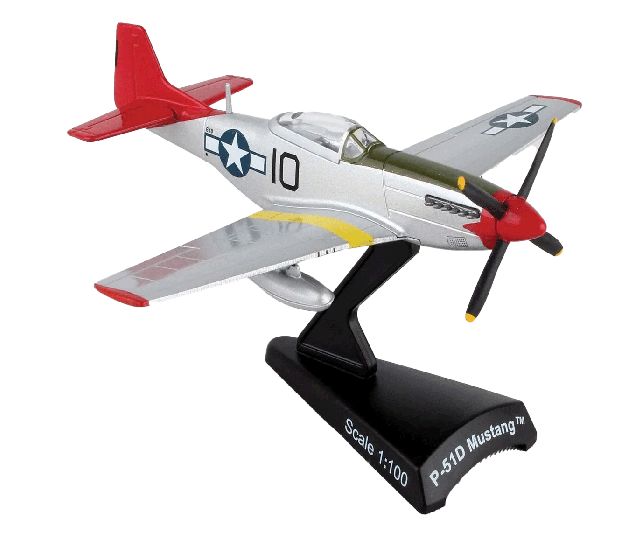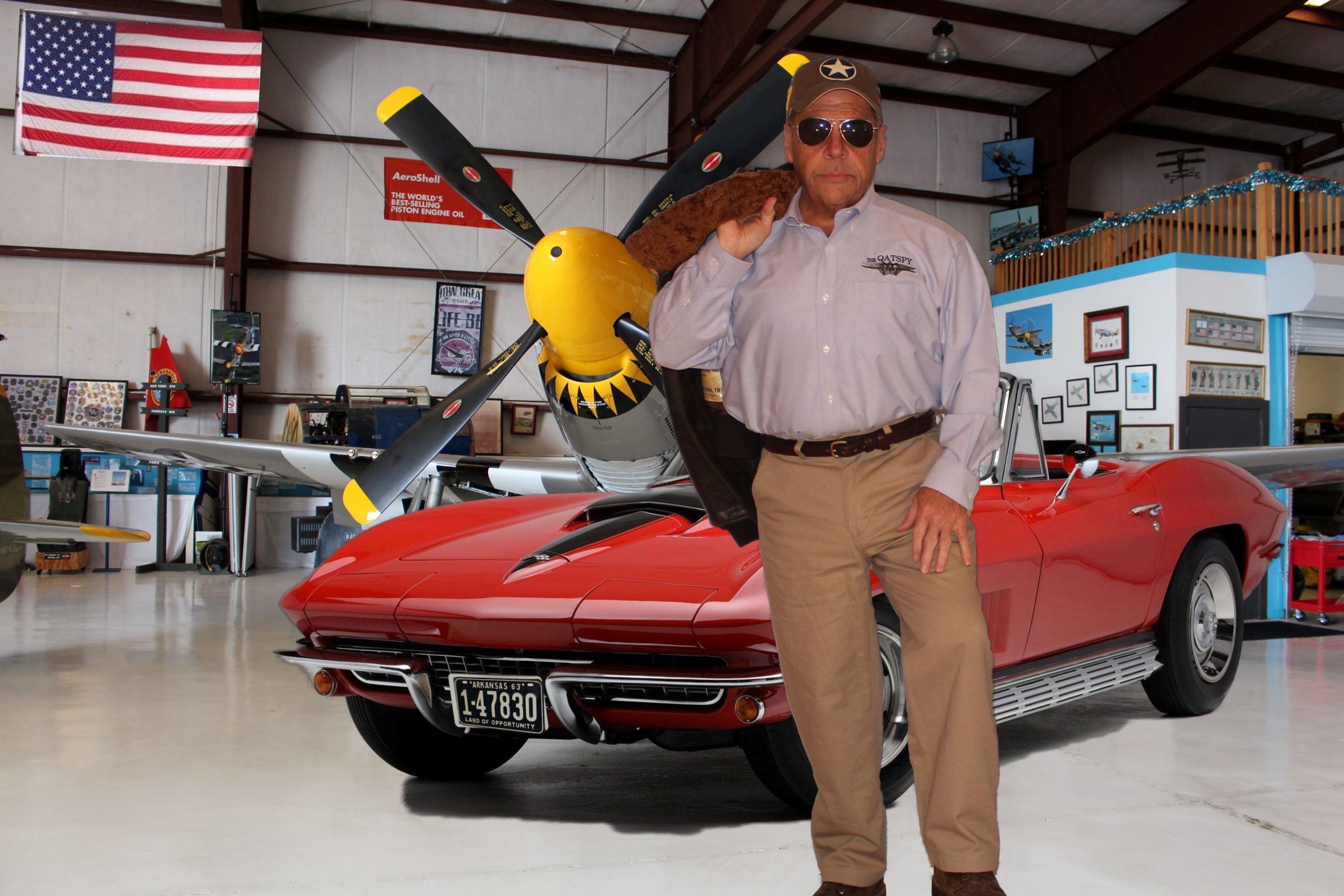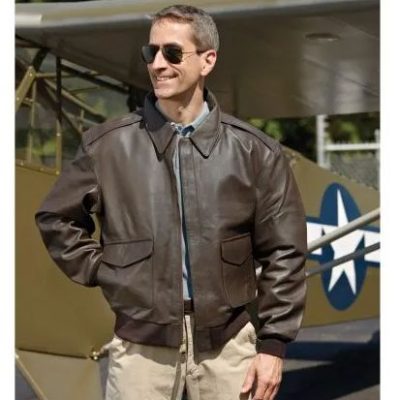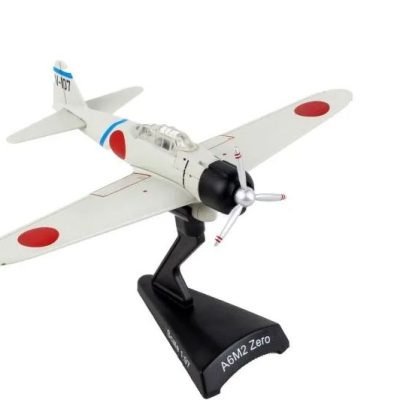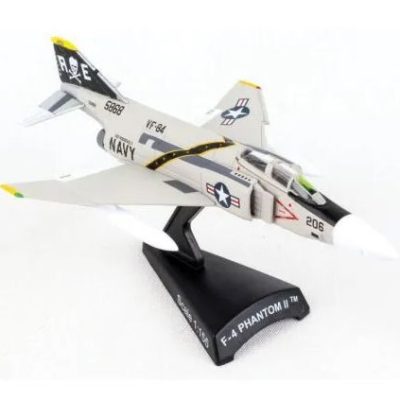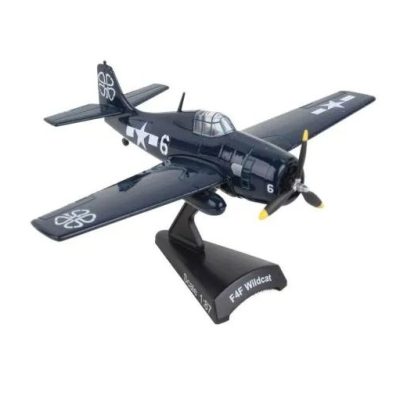Description
P-51D Mustang “Tuskegee Airmen” Die-Cast Model
Type of Aircraft: American long-range, single-seat fighter-bomber with the critical mission of long-range bomber escort used during World War II and the Korean War, among other conflicts.
Nation/Service of Origin: United States Army Air Corps; but was also used by Royal Air Force, Royal New Zealand Air Force, Royal Canadian Air Force
Period Operation: World War II and Korean War
Produced: From: 1942 to 1946, but the P-51 is still in use as racing competitions and airshows. The P-51 despite being a WWII fighter/bomber/escort still remains the NUMBER ONE fighter of all times even compared to modern-day jet fighters due to its role it had in World War II.
NOTE: The Mustang was designed to use the Allison V-1710 engine, which had limited high-altitude performance in its earlier variants. The aircraft was first flown operationally by the RAF as a tactical-reconnaissance aircraft and fighter-bomber (Mustang Mk I). Replacing the Allison with a Rolls-Royce Merlin resulted in the P-51B/C (Mustang Mk III) model, and transformed the aircraft’s performance at altitudes above 15,000 ft (4,600 m) (without sacrificing range),
Role: P-51 Mustang played a critical role with Allied air forces in three major theaters: North Africa, the Southwest Pacific, and Europe where The American Tuskegee Airman (Red Tails) flew this aircraft with red tail painted on the vertical stabilizer. It was used in North Africa, and India, the South West Pacific and Eastern Europe.
Manufacturer: North American Aviation Corporation
The P-40(C) and P-51(D) are two of my favorite aircraft to fly of the vintage WWII era.
Historical Data of Aircraft:
From Wikipedia, the free encyclopedia
The North American Aviation P-51 Mustang is an American long-range, single-seat fighter and fighter-bomber used during World War II and the Korean War, among other conflicts. The Mustang was designed in April 1940 by a team headed by James H. Kindelberger of North American Aviation (NAA) in response to a requirement of the British Purchasing Commission. The commission approached NAA to build Curtiss P-40 fighters under license for the Royal Air Force (RAF). Rather than build an old design from another company, NAA proposed the design and production of a more modern fighter. The prototype NA-73X airframe was rolled out on 9 September 1940, 102 days after the contract was signed, and first flew on 26 October.
The Mustang was designed to use the Allison V-1710 engine, which had limited high-altitude performance in its earlier variants. The aircraft was first flown operationally by the RAF as a tactical-reconnaissance aircraft and fighter-bomber (Mustang Mk I). Replacing the Allison with a Rolls-Royce Merlin resulted in the P-51B/C (Mustang Mk III) model, and transformed the aircraft’s performance at altitudes above 15,000 ft (4,600 m) (without sacrificing range), allowing it to compete with the Luftwaffe‘s fighters. The definitive version, the P-51D, was powered by the Packard V-1650-7, a license-built version of the two-speed, two-stage-supercharged Merlin 66, and was armed with six .50 caliber (12.7 mm) AN/M2 Browning machine guns.
From late 1943, P-51Bs and P-51Cs (supplemented by P-51Ds from mid-1944) were used by the USAAF’s Eighth Air Force to escort bombers in raids over Germany, while the RAF’s Second Tactical Air Force and the USAAF’s Ninth Air Force used the Merlin-powered Mustangs as fighter-bombers, roles in which the Mustang helped ensure Allied air superiority in 1944. The P-51 was also used by Allied air forces in the North African, Mediterranean, Italian, and Pacific theaters. During World War II, Mustang pilots claimed to have destroyed 4,950 enemy aircraft.
At the start of the Korean War, the Mustang, by then redesignated F-51, was the main fighter of the United States until jet fighters, including North American’s F-86, took over this role; the Mustang then became a specialized fighter-bomber and long range bomber escort, including by of of the most notable squads THE TUSKEGEE AIRMEN (The RED TAILS). Despite the advent of jet fighters, the Mustang remained in service with some air forces until the early 1980s. After the Korean War, Mustangs became popular civilian warbirds and air racing aircraft especially at airshows.
There was another redesign made to the canopy where the P-51X like the canopy design for the P-40 Warhawk, later the P51 (B-D) had the bubble design canopy to improve the pilot’s view.
In the movie TOPGUN:MAVERICK, Tom Cruise flew his P-51 Mustang (D) at the end of the movie and in the Lady Gaga soundtrack Hold My Hand. The P-40 Warhawk and the P-51 Mustang still remains one of my favorite two aircraft to fly. We have one at our hangar.

